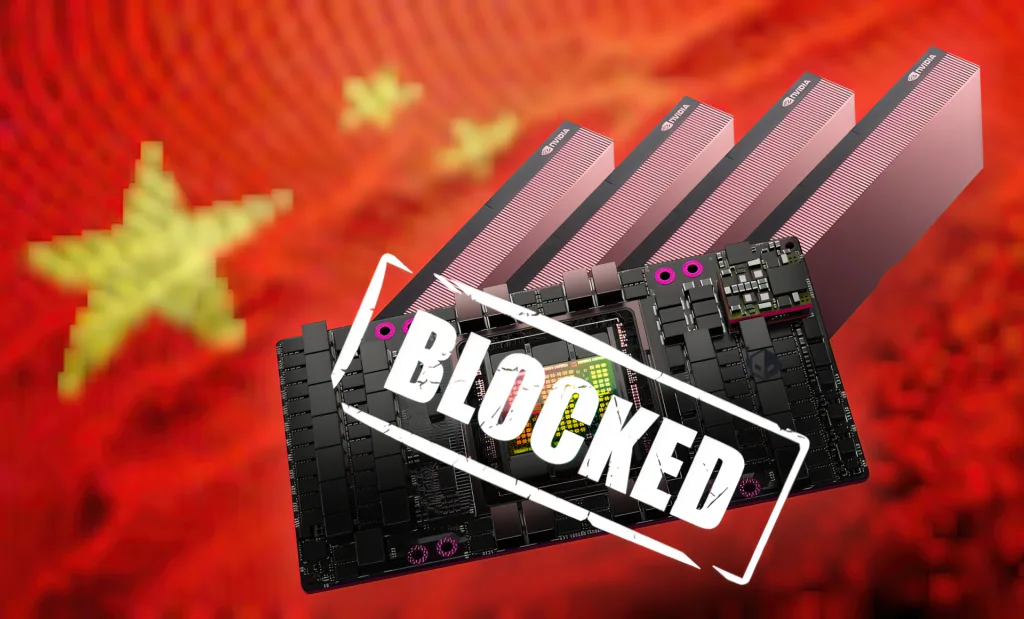Despite US sanctions aimed at crippling its semiconductor advancements, Huawei has managed to manufacture nearly 750,000 advanced AI chips, according to a recent report by the Center for Strategic and International Studies (CSIS). The report highlights how China’s leading chipmaker, Semiconductor International Manufacturing Corporation (SMIC), has navigated key restrictions and leveraged older equipment to sustain AI chip production.
Table of Contents
The Rise of Huawei Amid Sanctions
For years, the United States has imposed stringent restrictions on Chinese technology companies, particularly Huawei, in a bid to limit China’s progress in AI and semiconductor development. These measures have included cutting off access to critical semiconductor manufacturing tools and banning sales of advanced AI chips from companies like NVIDIA. However, Huawei has demonstrated resilience, leveraging domestic innovation and strategic partnerships to maintain its position in the AI chip race.
The CSIS report reveals that Huawei’s Ascend 910C AI chip is being produced at scale despite Washington’s efforts to restrict access to cutting-edge semiconductor technology. This signals a major shift in the global semiconductor industry, challenging US dominance and highlighting China’s determination to achieve self-sufficiency.
How Huawei and SMIC Are Beating the Odds
While SMIC lacks Taiwan’s TSMC-level expertise, it has strategically acquired essential US-made etching and deposition tools through Chinese firms SiEn and Pensun. These tools, although restricted for high-end chip production, were obtained legally under loopholes in end-user agreements. This has enabled SMIC to produce 7-nanometer chips using Deep Ultraviolet (DUV) lithography, despite not having access to the more advanced Extreme Ultraviolet (EUV) technology.
According to CSIS, SMIC plans to expand its 7nm wafer production to 50,000 wafers per month by the end of 2025, which could translate to nearly 400,000 Huawei Ascend 910C AI chips per month. However, due to packaging inefficiencies, only about 75% of these chips are fully functional, reducing the effective yield to approximately 750,000 AI chips.
Understanding Huawei’s Ascend 910C AI Chips
The Ascend 910C AI chip is a crucial component in Huawei’s AI ecosystem. It is designed for high-performance computing applications, including deep learning and data processing. The chip is part of Huawei’s Ascend AI portfolio, which aims to provide an alternative to NVIDIA’s powerful GPUs.
Key Features of the Ascend 910C AI Chip:
- High computational power: Optimized for AI workloads, making it a strong competitor to NVIDIA’s offerings.
- Energy efficiency: Designed to consume less power while delivering maximum performance.
- Compatibility with Huawei’s AI framework: Works seamlessly with Huawei’s software ecosystem, including the CANN AI computing architecture.
Huawei’s ability to produce such chips in large volumes, even under heavy sanctions, showcases China’s strategic advancements in semiconductor manufacturing.
NVIDIA’s Role & China’s AI Strategy
US export controls restricted Chinese firms from accessing NVIDIA’s high-end AI GPUs like the A100 and H100. However, NVIDIA circumvented these restrictions by modifying existing chips, creating the A800 and H800 models for China. These chips, although slightly downgraded, were still powerful enough for AI applications, fueling China’s AI growth.
How NVIDIA Adapted to US Export Controls
NVIDIA’s response to the US-China trade war was to modify the interconnect speed of its chips rather than the core processing power. This allowed them to legally export AI chips to China that, while compliant with US regulations, still performed at a competitive level.
According to the CSIS report, industry sources confirmed that NVIDIA “blew fuses” on A100 chips to reduce interconnect speed, effectively creating the A800 series. Similarly, the H800 GPUs were tailored for the Chinese market, closely resembling the restricted H100 models.
The demand for these modified GPUs skyrocketed in China, proving that even with restrictions, Chinese AI firms could still leverage powerful computing resources for AI research and development.
China’s Search for AI Chip Alternatives
While NVIDIA’s GPUs have played a critical role in China’s AI growth, Chinese firms are actively seeking alternatives. One such alternative is Huawei’s CANN AI computing framework, which aims to replace NVIDIA’s CUDA programming language.

Challenges in Replacing NVIDIA’s CUDA
CUDA has become the de facto standard for AI development, with deep integration into machine learning frameworks like TensorFlow and PyTorch. Huawei’s CANN, while promising, lacks the ecosystem maturity of CUDA. The CSIS report suggests that it will take years before Huawei’s AI chips and CANN-compatible software can compete with NVIDIA’s dominance.
Despite these challenges, China remains determined to develop an independent AI hardware and software ecosystem, reducing its reliance on Western technologies.
US Sanctions: Impact and Loopholes
US sanctions were designed to cripple China’s AI and semiconductor industry, but loopholes have allowed companies like Huawei and SMIC to navigate around restrictions.
Key Loopholes Allowing China’s AI Chip Boom
- DUV Lithography Workaround: Since EUV equipment is restricted, SMIC has optimized DUV machines to fabricate 7nm chips.
- Strategic Equipment Acquisitions: Chinese firms legally acquired US-made etching and deposition tools through third parties.
- Modified NVIDIA Chips: NVIDIA’s A800 and H800 GPUs provided China with powerful AI computing resources despite export bans.
- Smuggling & Gray Markets: There have been reports of illicit chip smuggling networks ensuring a continuous supply of advanced AI chips.
The CSIS report warns that the US must tighten export controls further to close these gaps and prevent China from continuing its semiconductor advancements.
The Future of China’s AI Chip Industry
China has long aimed for self-sufficiency in semiconductor production, and recent developments indicate that it is making significant strides toward that goal. With domestic firms developing EUV lithography machines, the landscape of the AI chip industry could change dramatically in the next few years.
Key Developments to Watch:
- SMIC’s 7nm expansion: The company aims to scale production to 50,000 wafers per month by late 2025.
- Huawei’s AI chip roadmap: Further advancements in Ascend AI chips could challenge NVIDIA’s dominance.
- China’s EUV production: Reports suggest that domestic EUV machines will enter trial production in late 2025, allowing China to produce cutting-edge chips without reliance on foreign technology.
- US policy adjustments: With these developments, Washington may impose even stricter regulations to curb China’s AI and semiconductor growth.
What This Means for the Global AI Race
Huawei’s ability to mass-produce AI chips despite sanctions signals a shifting landscape in the semiconductor industry. As China continues to invest heavily in AI and semiconductor self-sufficiency, US policymakers may need to reassess their export control strategies.
The CSIS report concludes that there is no more time to waste in tightening US restrictions, as China is already producing AI chips at scale. If left unchecked, China’s semiconductor advancements could soon rival those of the United States







